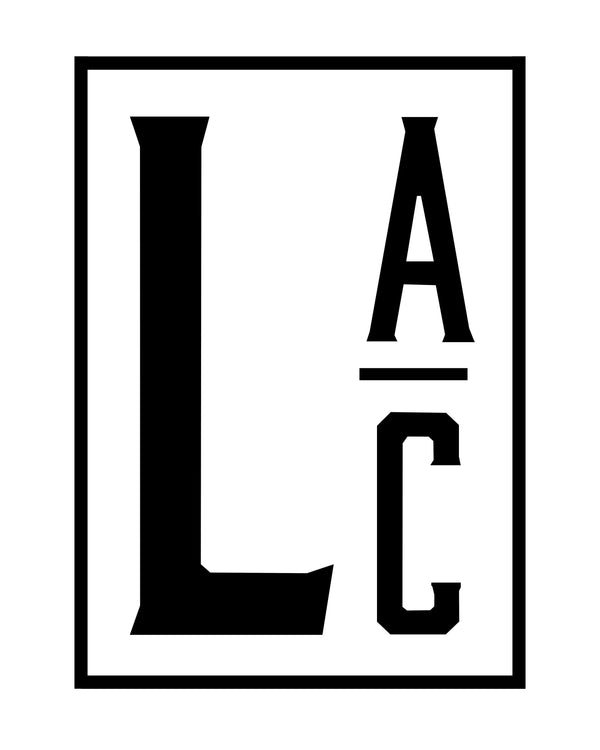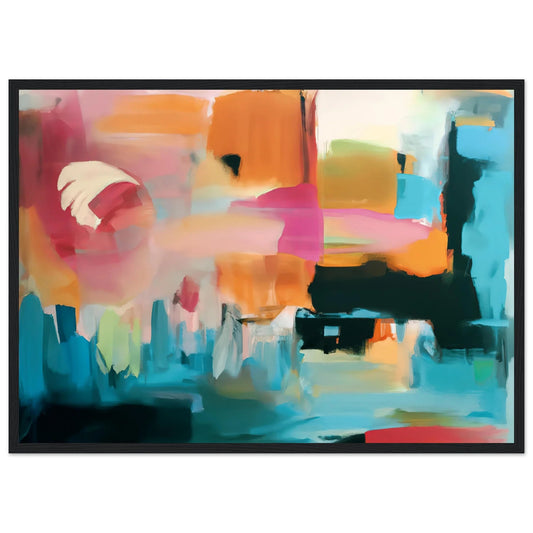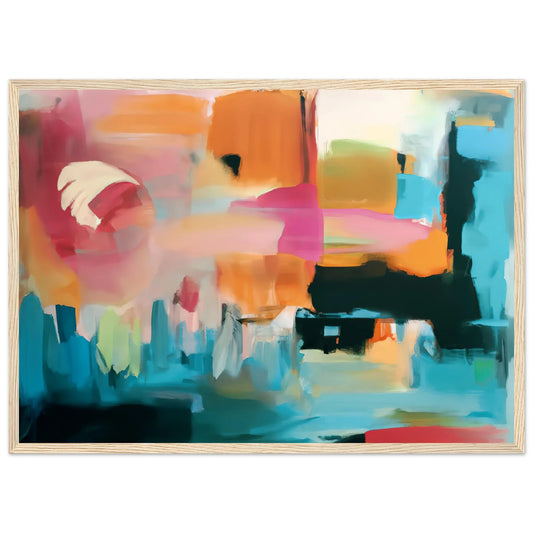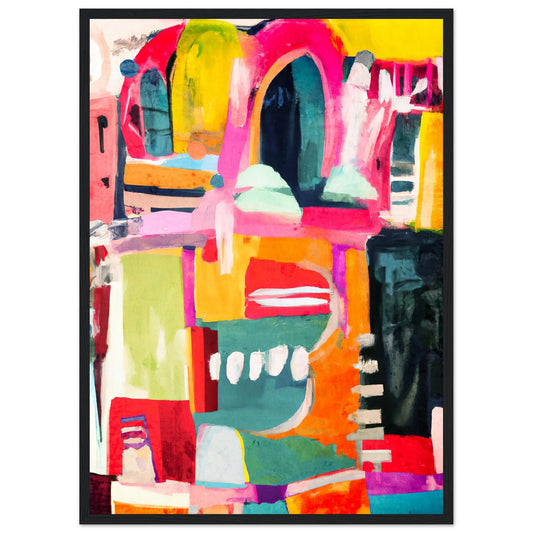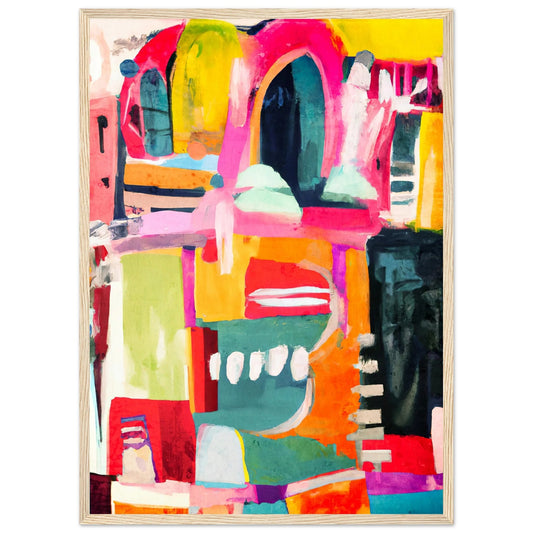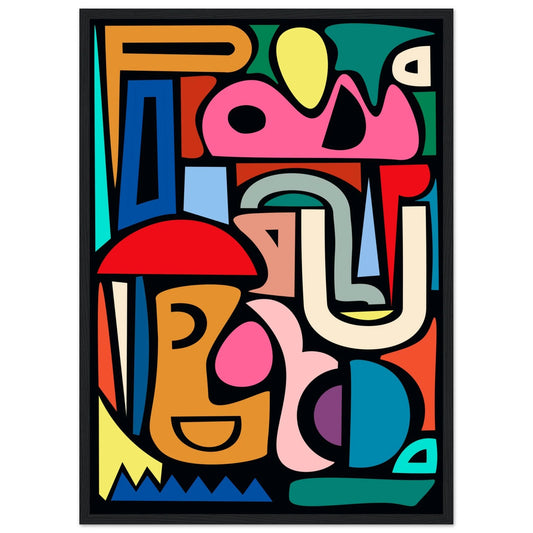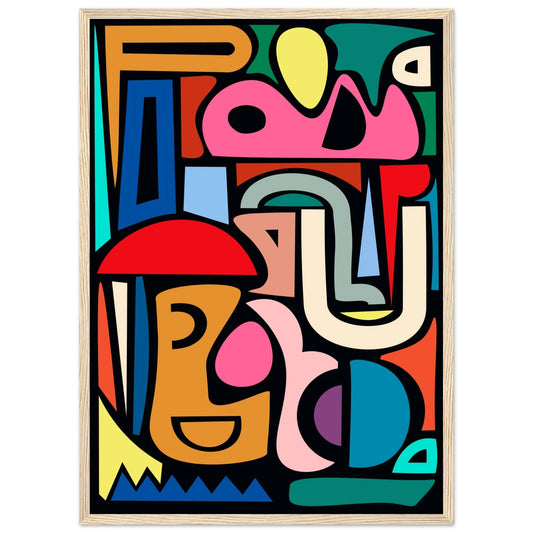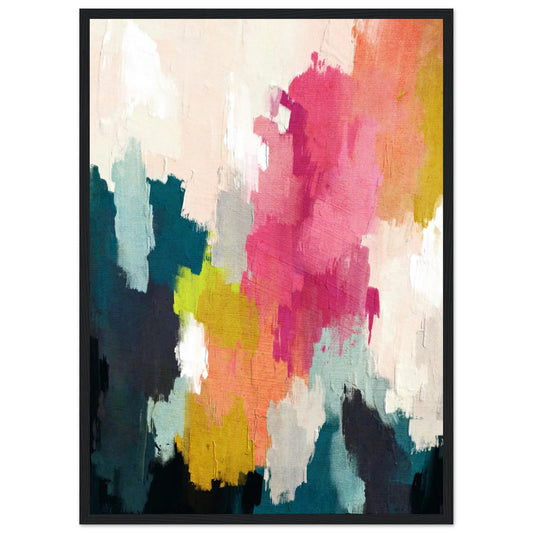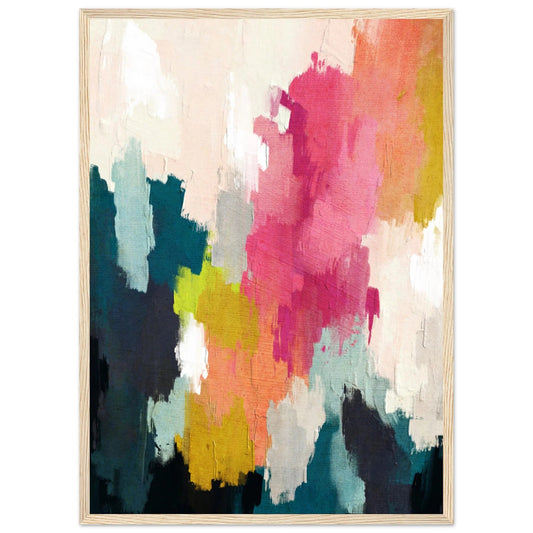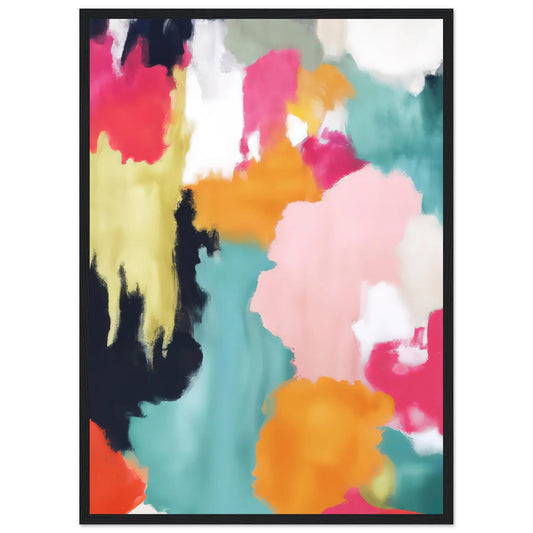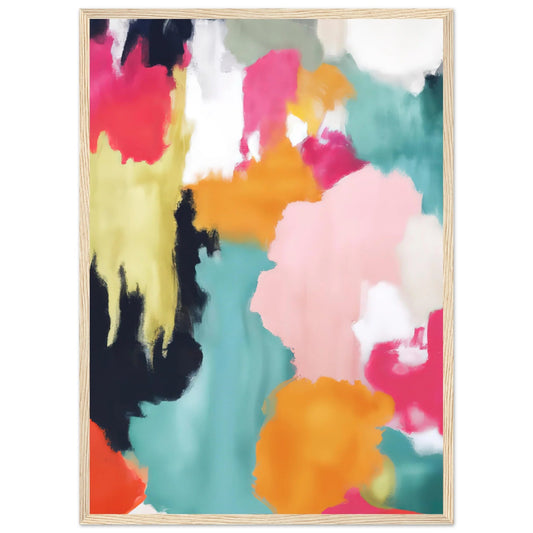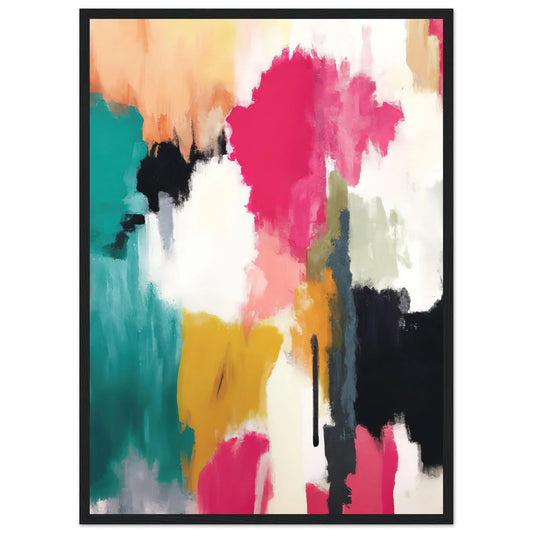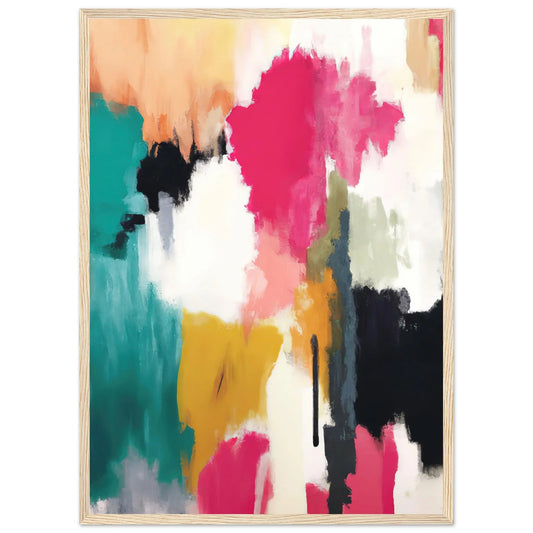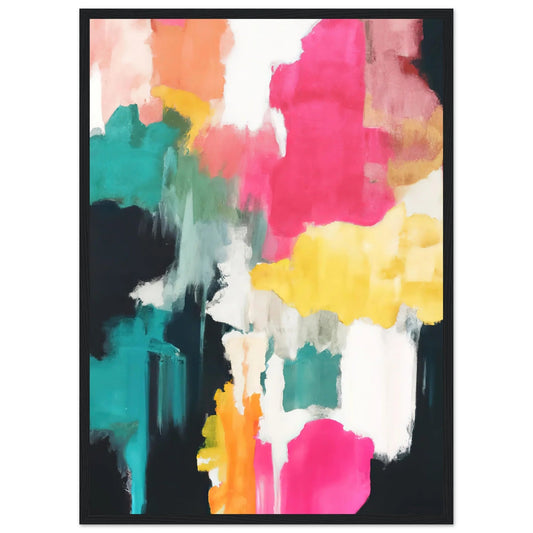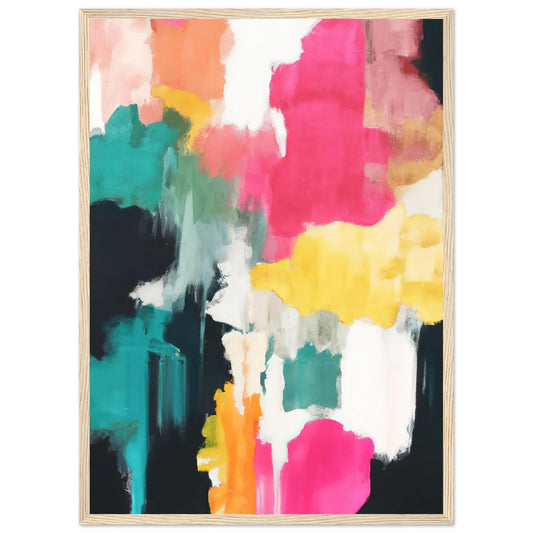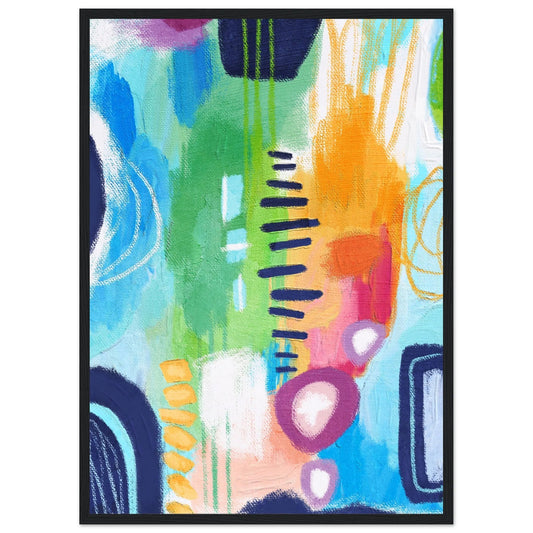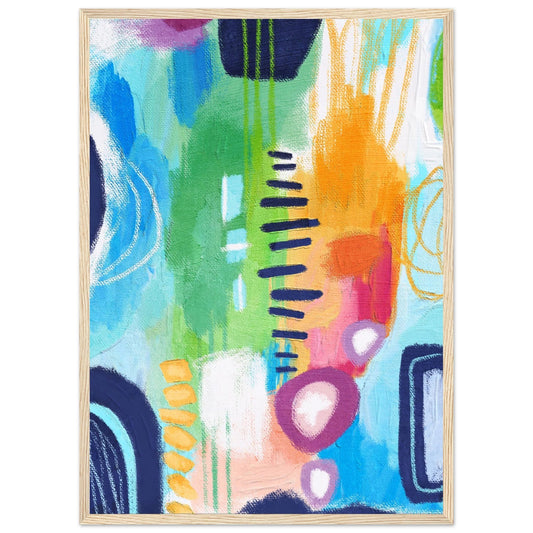-
Large Abstract Wall Art
Regular price From $99.00 USDRegular priceUnit price / per -
Abstract Wall Art
Regular price From $99.00 USDRegular priceUnit price / per -
Modern Abstract Wall Art
Regular price From $99.00 USDRegular priceUnit price / per -
Abstract Canvas Wall Art
Regular price From $99.00 USDRegular priceUnit price / per -
Colorful Abstract Canvas Wall Art
Regular price From $99.00 USDRegular priceUnit price / per -
Abstract Colorful Wall Art
Regular price From $99.00 USDRegular priceUnit price / per -
Colorful Abstract Wall Art
Regular price From $99.00 USDRegular priceUnit price / per -
Blue Abstract Wall Art
Regular price From $99.00 USDRegular priceUnit price / per
Collection: Abstract Wall Art
Looking to add a touch of creativity and sophistication to your home décor? Abstract wall art might just be the perfect solution.
We explore the different styles of abstract wall art, including Cubism, Surrealism, Expressionism, Pop Art, and Minimalism. Delve into the impact of abstract wall art on modern art and how it has influenced other art forms.
Find tips on how to incorporate abstract wall art in your home, from choosing the right piece to DIY options. Discuss the future of abstract wall art, including emerging trends and how it will continue to evolve.
Discover the world of abstract wall art and unleash your inner art enthusiast.
The Different Styles of Abstract Wall Art
Abstract Wall Art encompasses various styles, each presenting a distinct form of artistic expression. From the precise geometrical shapes of Cubism to the imaginative visuals of Surrealism, these styles engage art enthusiasts with their visual appeal and vivid color schemes. Whether it's the bold characteristics of Expressionism or the understated elegance of Minimalism, Abstract Wall Art serves as a focal point in any living space.
Cubism, recognized for its fragmented shapes and incorporation of multiple viewpoints, challenges traditional notions of space and perspective, encouraging viewers to explore beyond the usual boundaries of art. Conversely, Surrealism delves into the subconscious realms, producing artwork that questions reality and conventional standards. Expressionism, emphasizing emotion and raw intensity, often employs vigorous brushstrokes and vibrant color palettes to convey profound sentiments. In contrast, Minimalism simplifies art to its fundamental components, emphasizing clean lines, simplicity, and a serene ambiance.
1. Cubism
Cubism is known for its abstract and geometric forms that create a visual impact through bold and striking compositions. Artists incorporate intricate shapes and vibrant colors to break down and reconstruct subjects in unique ways.
The origins of Cubism date back to the early 20th century, with Pablo Picasso and Georges Braque recognized as its pioneers. This avant-garde movement transformed traditional artistic conventions by incorporating multiple viewpoints within a single artwork. Through the dissection of forms and manipulation of perspective, Cubist artists questioned the concept of a fixed viewpoint and embraced the portrayal of the essence of an object rather than a literal representation. This innovative artistic approach continues to influence modern art, inspiring artists to experiment with new methods of representing the complexities of perception and reality.
2. Surrealism
Surrealism explores the dreamlike realms of the subconscious, providing a platform for artistic vision and creative expression. Using vibrant colors and contemporary themes, Surrealism blurs the boundaries between reality and imagination.
This artistic movement, initiated by Andre Breton in the early 20th century, aimed to unlock the creative capacity of the mind through illogical juxtapositions and symbolic representations. Salvador Dali, renowned for his melting clocks in 'The Persistence of Memory,' and René Magritte, famous for his thought-provoking pipe in 'The Treachery of Images,' are celebrated Surrealist artists who encapsulated the essence of this style.
Surrealism has left a lasting impression on the art world, motivating future generations to delve into the depths of their subconscious and convey intricate emotions through vivid colors and abstract imagery.
3. Expressionism
Expressionism captures raw emotions through bold brushstrokes and vibrant colors, creating a visual language of intensity and passion. This style often explores texture and depth to convey abstract expressions of the artist's inner world.
By looking into the depths of human emotion, Expressionist painters like Edvard Munch and Emil Nolde crafted works that spoke directly to the soul. The use of distorted figures and exaggerated features in their art served as a window into the artists' psyche, reflecting their angst, fear, and ecstasy. Utilizing techniques such as heavy impasto and dynamic compositions, these artists aimed to provoke strong emotional reactions in the viewer, blurring the lines between reality and the unseen.
In the realm of abstract expressionism, artists like Jackson Pollock and Mark Rothko took this notion further, channeling their inner turmoil and contemplations onto the canvas through non-representational forms and stark contrasts.
4. Pop Art
Pop Art celebrates vibrant colors and contemporary themes by drawing inspiration from popular culture and mass media. With a focus on artistic vision and visual impact, Pop Art transforms everyday objects into bold statements of creativity.
This artistic movement emerged in the 1950s in the United States and the UK, challenging traditional notions of what constituted 'fine art'. Influential Pop artists such as Andy Warhol, Roy Lichtenstein, and Claes Oldenburg embraced consumerism and popular imagery, incorporating elements like advertisements, comic strips, and everyday products into their works.
By blending high and low culture, Pop Art engaged with contemporary society and critiqued the increasing commercialization of art and society. The use of vibrant colors and bold graphics became signature characteristics of the movement, reflecting the dynamic energy of post-war consumer culture.
5. Minimalism
Minimalism is characterized by simplicity and elegance, utilizing clean lines and neutral colors to achieve a modern and sophisticated aesthetic. Abstract Wall Art in this style emphasizes the beauty of simplicity, making it a versatile option for contemporary decor.
Minimalist artists like Donald Judd and Agnes Martin have made significant contributions to this movement by highlighting the importance of space and minimal elements in their artwork. The influence of Minimalism in interior design is significant, promoting a feeling of calm and clarity through uncluttered spaces.
By incorporating minimalist art pieces such as sculptures and paintings featuring geometric shapes and subtle hues, individuals can enhance the visual appeal of living spaces while maintaining a sense of serenity and balance.
The Impact of Abstract Wall Art on Modern Art
Abstract Wall Art has made waves in the world of modern art by challenging traditional conventions and introducing new forms of artistic expression. With its emphasis on visual impact, vibrant colors, and originality, Abstract Wall Art attracts art enthusiasts looking for distinctive and fashionable artwork.
The progression of artistic techniques in Abstract Wall Art has been characterized by a shift away from realistic depictions towards more interpretive and subjective forms of expression. Artists often explore a variety of mediums and processes to create emotionally charged compositions that delve into the complexities of the human mind.
Abstract expressionism, a significant movement within abstract art, highlights the spontaneity and emotional depth of the creative process, resulting in art that captures raw emotions and energy. This style has had a significant impact on contemporary artists, motivating them to break boundaries and experiment with unconventional methods of artistic communication.
How Has Abstract Wall Art Influenced Other Art Forms?
Abstract Wall Art has evolved beyond its original form to impact various art forms, including contemporary art genres. Its focus on visual impact, innovative artistic techniques, and creative expression has served as inspiration for artists working across different mediums.
This influence reaches beyond traditional canvas pieces, leading to a surge in experimentation with sculpture, installations, and mixed media projects. Artists leverage the common principles of bold abstract compositions, dynamic use of color, and unconventional forms to produce engaging three-dimensional works.
The interaction between negative space, texture, and line work in Abstract Wall Art acts as a catalyst for the exploration of new dimensions and the expansion of artistic expression in varied forms.
How to Incorporate Abstract Wall Art in Your Home
Incorporating Abstract Wall Art into home decor can enhance the aesthetic appeal of the living space, turning it into a showcase of artistic expressions. Whether it's used as a focal point or to create a specific ambiance, Abstract Wall Art provides numerous options for improving interior design.
When choosing Abstract Wall Art for different rooms in the house, it's important to consider the existing color palette and overall theme to ensure cohesiveness. For example, in living rooms, bold and vibrant abstract pieces can introduce a lively and eclectic vibe, while in bedrooms, calming and soothing abstract art can contribute to a sense of relaxation and tranquility. Experimenting with various sizes and arrangements can help achieve the desired visual balance. Mixing and matching different art styles can also lead to an engaging and dynamic display. Ultimately, personal taste and style preferences should be the main guiding factors in selecting Abstract Wall Art for the home.
1. Choosing the Right Piece
Choosing the right Abstract Wall Art piece involves considering decor style, personal preferences, and the visual appeal intended to achieve. Online galleries offer a variety of options for personalized art purchases, whether one prefers high-quality handmade paintings or affordable prints.
When selecting abstract wall art, size is an important factor to consider. It is essential to think about the dimensions of the wall where the artwork will hang to ensure it fits well and complements the space. Additionally, considering the color scheme of the room and how the artwork can enhance or accentuate the existing colors is crucial. Establishing a budget before browsing is also important as it helps narrow down choices and prioritize preferences.
Ultimately, choosing pieces that align with individual tastes and evoke positive emotions can create a harmonious and personalized living environment.
2. Placement and Display
The strategic placement and creative display of Abstract Wall Art have the potential to transform blank walls into captivating gallery spaces. Whether one is creating a gallery wall or showcasing a statement piece, the right placement can enhance the ambiance and elevate the decor style.
By taking into account the size and scale of the wall art concerning the surrounding furnishings, a harmonious visual flow can be created in the room. Mixing different sizes and shapes of abstract pieces can add dynamism to the display. To achieve a cohesive look with multiple artworks, it's beneficial to experiment with various arrangement layouts before settling on a final placement. Attention should also be given to lighting fixtures that can emphasize the textures and colors of the art, with the goal of creating a focal point in the room.
3. Complementing Your Décor
Abstract Wall Art is a versatile decor element that can complement various design styles and aesthetic preferences. Whether aiming for creative expression or aligning with contemporary art trends, the right art piece can enhance the visual appeal of your space.
In a minimalist setting, abstract wall art can provide a focal point without overwhelming the simplicity of the space, adding a touch of intrigue and depth.
On the other hand, in an eclectic environment, bold and vibrant abstract pieces can inject a burst of energy and personality, creating a dynamic visual contrast.
By selecting artworks that resonate with your personal artistic vision, you can infuse your space with a unique character and reflect your individual style.
This harmonious blend of art and decor can elevate the ambiance of any room, creating a cohesive and inviting atmosphere.
4. DIY Abstract Wall Art
Engage in the creative process by creating personalized DIY Abstract Wall Art that mirrors your individual style and artistic vision. From exploring new artistic techniques to experimenting with vibrant colors, DIY projects provide an opportunity to produce contemporary and distinct art pieces.
Embrace the freedom to express yourself through abstract art forms, allowing your imagination to flow freely on the canvas. Begin by selecting a canvas size that suits both your space and desired aesthetic. Experiment with various brush strokes, layering techniques, and unconventional materials to introduce depth and texture to your artwork. Include elements that carry personal significance, such as favorite quotes, symbols, or memories, in your design to imbue it with a sense of uniqueness. Allow your intuition to guide you as you blend colors and shapes to create a truly one-of-a-kind masterpiece.
The Future of Abstract Wall Art
The future of Abstract Wall Art presents exciting possibilities as emerging trends incorporate abstract shapes, vibrant colors, and custom-made creations. Art enthusiasts can anticipate a dynamic landscape in which artistic vision intersects with individual expression in personalized art pieces.
This merging of traditional techniques with modern technology is driving a wave of innovation in the art world, with creativity's boundaries becoming more fluid and expansive. Customization plays a central role in this movement, enabling artists to engage with their audience on a deeper level by tailoring artworks to specific preferences and needs. Digital art is also making a significant impact, adding a new dimension to abstract wall art through its versatility and interactive potential.
What Are Some Emerging Trends in Abstract Wall Art?
The realm of Abstract Wall Art is experiencing emerging trends that emphasize contemporary styles, custom-made designs, and personalized artistic expressions. These trends redefine the boundaries of visual aesthetic in modern art, exploring new artistic techniques and vibrant colors.
Artists are pushing Abstract Wall Art to new heights with innovative approaches like interactive art installations and mixed media creations. By incorporating personal narratives and custom elements into their artwork, artists are producing pieces that deeply resonate with viewers emotionally and intellectually. This evolution in abstract art not only highlights the artists' creativity but also encourages the audience to interact with the pieces in more profound ways, blurring the lines between traditional and modern artistic expressions.
How Will Abstract Wall Art Continue to Evolve?
The evolution of Abstract Wall Art is expected to be influenced by artistic vision, contemporary trends, and innovative methods. Artists will explore new techniques to create visual impact and convey artistic expression, leading to changes in Abstract Wall Art that mirror the evolving landscape of modern art.
Advancements in materials are anticipated to bring about changes in Abstract Wall Art, with the introduction of new mediums like biodegradable materials, recycled elements, and sustainable alternatives. These advancements will not only promote a more environmentally conscious approach but also offer artists a broader range of options for experimentation and creativity.
The incorporation of digital art techniques and technologies into Abstract Wall Art is set to create new opportunities for interactive experiences, enabling viewers to interact with the artwork in immersive and innovative ways. This merging of technology with traditional artistry has the potential to redefine the boundaries of Abstract Wall Art and influence its future direction in dynamic and intriguing manners.
